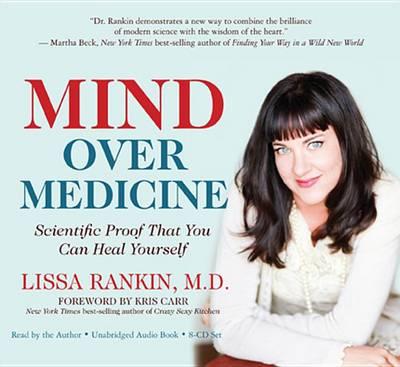
In her book Mind Over Medicine: Scientific Proof That You Can Heal Yourself, Dr Lissa Rankin lays out many remarkable examples of how the mind can affect the body. But first let us take a look at some other facts.
Samuel Hahnemann (1755-1843), the Founder of Homeopathy, had exhorted that a true Practitioner of the Healing Art must be a preserver of health and know the things that derange health and cause disease.1Hahnemann, S: The Organon of Medical Art, 6e, English translation, Birdcage Press 1996 In the past 150 years, the efforts of modern medicine have focused primarily on finding the infection causing organism (which is thought to cause the disease) and developing medicines to effectively kill the same. Modern pharmacology has fine tuned the delivery of medicines by working on receptor interactions at the cell wall and interactions with enzymes.
Disease, alas is not just the effect of micro-organisms! There are many other (important) factors to be taken into account. For example, going by the definition of epidemic, as defined by the US Centers for Disease Control and Prevention, an attack rate of 15 cases of meningococcal disease per 100,000 people for two consecutive weeks constitutes an epidemic. What explains the fact that the remaining 99,985 people in the population of 100,000 remain uninfected?2http://www.slate.com/articles/news_and_politics/explainer/2003/12/outbreaks_vs_epidemics.html Surely there is more than meets the eye?
Epidemiology, or the studies of the patterns, causes, and effects of health and disease conditions, began as early as the 17th century. At that time, this study was centered on the ill effects of poverty, poor housing and work environments.3Berkman, LF & Kawach, I: A Historical Framework for Social Epidemiology, Oxford University Press, 2000 However, the domination of pharmaceutical conglomerates and other vested interests have shifted the focus of research from public hygiene, psychosocial effects, and psychosomatic causes, to biochemistry.

Pharmaceutical companies are now actively involved in sponsoring the definition of diseases and promoting them to both prescribers and consumers. Some programs of these corporations are now better described as disease mongering: i.e., widening the boundaries of treatable illness in order to expand markets for those who sell and deliver treatments. One form of doing this is by ostensibly engaging in raising public awareness about under-diagnosed and under-treated problems, and promoting a view that the condition is widespread, serious, and treatable.4Moynihan, R: Selling sickness: the pharmaceutical industry and disease mongering, BMJ 2002;324:886)
So let us take a view of medical history. The infections that ravaged at the beginning of the industrial revolution were tuberculosis, cholera and typhoid. Tuberculosis, reached a peak over two generations. In New York in 1812, the death rate was estimated to be higher than 700 per 100,000. By 1882, when Koch (he was later awarded the Nobel Prize in 1905) first isolated and cultured the bacillus, it had already declined to 370 per 100,000. The rate was down to 180 when the first sanatorium was opened in 1910, and before antibiotics became routine (1940), it had slipped into eleventh place with a rate of 48.5Illich, Ivan: Medical Nemesis-The Expropriation of Heath, Random House 1976 Strangely, despite all the advances in medicine, the rate of disease in London in the year 2011 again rose to 44.9 cases per 100,000.6Pealing, L et al: The resurgence of tuberculosis and the implications for primary care, British Journal of General Practice, Jul 2013; 63(612): 344–345
Cholera, dysentery, and typhoid similarly peaked and dwindled outside the physician’s control. By the time their etiology was understood and their therapy had become specific, these diseases had lost much of their virulence and hence their social importance. The combined death rate from scarlet fever, diphtheria, whooping cough, and measles among children up to fifteen had declined nearly 90% between 1860 and 1965, long before the introduction of antibiotics and widespread immunization.
So what was the reason for this spectacular improvement?
In part this may be attributed to improved housing and to a decrease in the virulence of micro-organisms, but by far the most important factor was a higher host-resistance due to better nutrition. In poor countries today, diarrhea and upper-respiratory-tract infections occur more frequently, last longer, and lead to higher mortality where nutrition is poor, no matter how much or how little medical care is available.7Scrimshaw,CE et al: Interactions of Nutrition and Infection, Geneva, WHO, 1968 In England, by the middle of the nineteenth century, infectious epidemics had been replaced by major malnutrition syndromes, such as rickets and pellagra.
The times that followed were dominated by the diseases of early childhood and, somewhat later, by an increase in duodenal ulcers in young men. When these declined, the modern epidemics took over: coronary heart disease, emphysema, bronchitis, obesity, hypertension, cancer (especially of the lungs), arthritis, diabetes, and so-called mental disorders. Despite intensive research, we have no complete explanation for the genesis of these changes. Pollutants, toxicants, food additives or pesticides were often blamed for this. John Cassel, Professor of Epidemiology at the University of North Carolina proposed the hypothesis of “stress buffering”, which states that susceptibility to disease or slow recovery from illness is affected strongly by social environment.8Cassel, J: The contribution of social environment to host resistance, 1976 American Journal of Epidemiology, 104, 107-123
From the above, scholars tend to believe that medicines alone cannot be credited with the elimination of old forms of mortality, and nor should it be blamed for the increased expectancy of life spent in suffering from the new diseases. For more than a century, analysis of disease trends has shown that the environment is the primary determinant of the state of general health of any population.
That is why, a Healer who is well versed with practices like Meditation, Yoga, Creative Visualisation, supplemented by advice on Homeopathy and Bach Flower Remedies can guide you to Heal Thyself.
